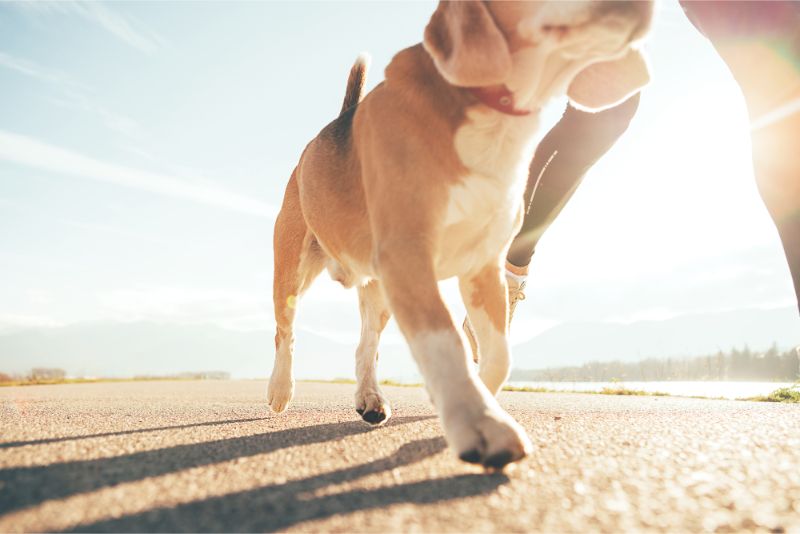
You’re likely to hear that winter can be brutal on a pet’s sensitive paws. Certainly, snow, ice, and winter chemicals can wreak havoc on tender paws, but summertime also poses unique challenges to paw health. Beyond just watching for hot pavement, conscientious pet owners must take precautions to keep their pet’s paws safe and comfortable.
As you gear up for summer, True Care Veterinary Hospital wants to share a few tips about summer pet paw safety. Here are some basics to prevent your pet from feeling the burn of summer.
Hot Surfaces
Hot surfaces can reach blazing temperatures under the summer sun and can burn more quickly than you might expect. Surfaces to be aware of include:
- Pavement
- Sand
- Concrete
- Paving stones
- Boat docks
- Metal grates
- Manhole covers
- Car or truck surfaces
Signs of a Burn
Many pet owners don’t notice paw burns until it’s too late. Since pets walk on all fours, even one burn can make it difficult for your pet to stand or walk. Be mindful of the following warning signs:
- Atypical pulling on the leash to get to shadier sections of the road or walking surface
- Limping
- Reluctance to walk
- Paw pads that have changed in color and become darker
- Licking or chewing at the paw pads
- Inflamed, raw, or blistered pads
If you notice any of these signs, take your pet to a cool area right away (carry them if possible). Rinse their feet with cool water, and visit us right away. We’ll examine your pet’s paws for deeper burns/blisters, and we can assess the possibility of infection. We may prescribe medication and determine whether bandaging is necessary.
Softened Paws
Spending time in a pool or lake will soften your dog’s paw pads and can make them more susceptible to burning. Lotions and moisturizers not intended for use on a dog’s paws can have the same effect, so ask us for pet-friendly recommendations.
Foxtails
Foxtails are another danger to paws that are prevalent during the summer. This pesky weed has a seed head that can burrow into any part of a pet’s body. Once underneath the skin, they can migrate through soft tissue, causing infection, serious injury, or even death. Paw fur picks up debris easily, so if you’re out hiking or walking through brush or even on pavement where weeds are present, it’s important to check your dog’s paws frequently along the way and when you return home.
General Pet Paw Safety
Pet paw safety is necessary no matter the season. Here are some basic tips you can employ year-round:
- Walk your dog before surfaces become blazing hot. Early morning is best, although toward the end of the day can also work.
- Walk your dog on the grass or a trail instead of on pavement or asphalt.
- Use a veterinary recommended paw conditioner or salve to prevent cracking and to keep pads healthy.
- Consider dog booties for your pet to wear while running, walking, or working.
- Make routine nail trims a habit so long nails don’t pierce pads or become damaged and painful.
- Trim hair in between the toes to avoid painful matting and related infections.
- Check your pet’s paws regularly for foreign objects, such as small pebbles, foxtails, broken glass, and other debris.
Now that you’re up-to-date on summer pet paw safety, we hope you’re able to get outside and enjoy some quality time with your best friend. If you have additional questions about your pet, please give us a call!

